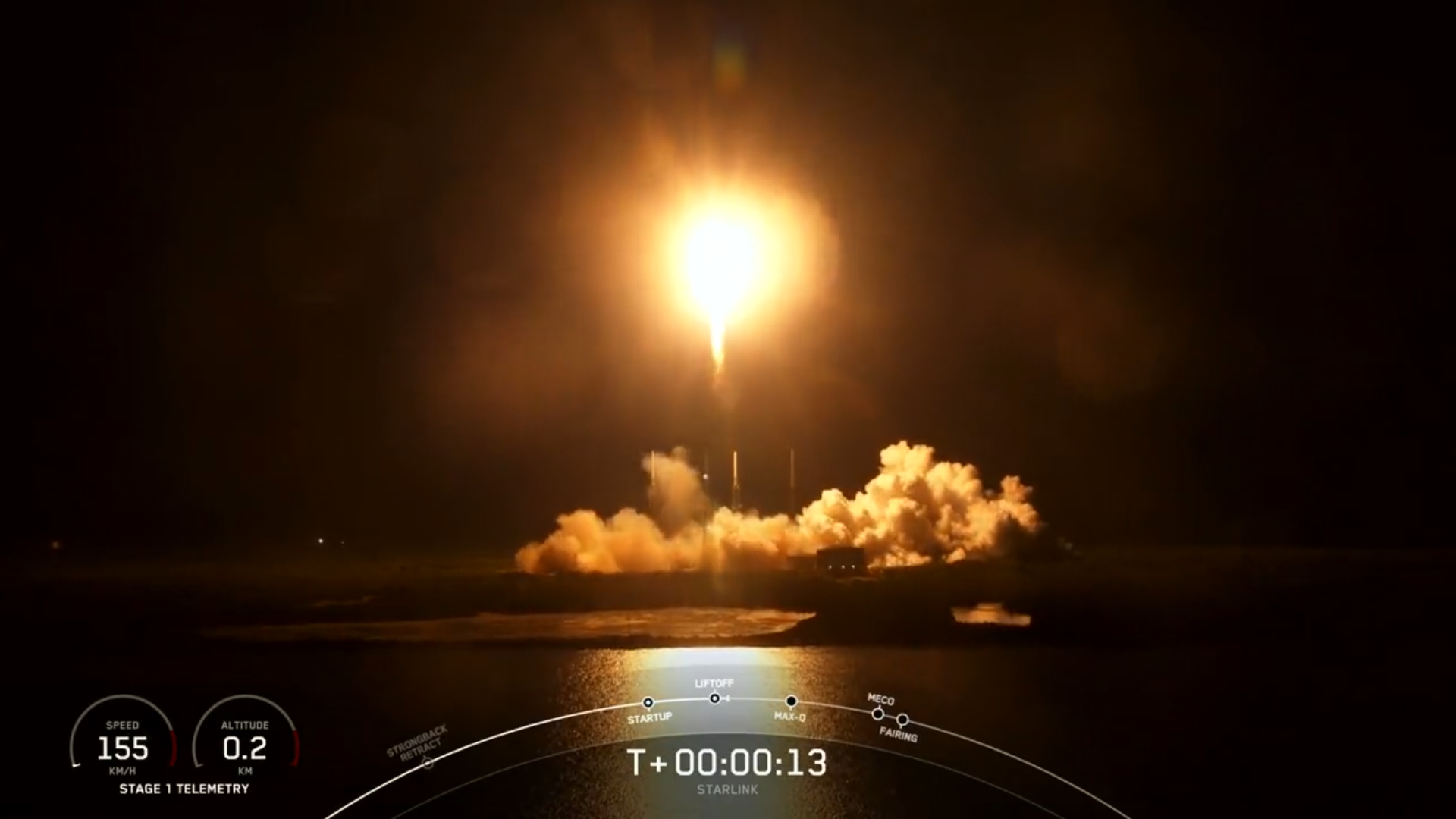SpaceX launched new batch of its Starlink broadband satellites to orbit early Sunday morning (May 14) and landed a rocket at sea in the company's latest successful mission.
A Falcon 9 rocket topped with 56 Starlink spacecraft lift off from Cape Canaveral Space Force Station in Florida Sunday at 1:03 a.m. EDT (0503 GMT).
Related: Starlink satellite train: How to see in the night sky

The Falcon 9's first stage returned to Earth 8.5 minutes after liftoff, landing on the SpaceX droneship Just Read the Instructions, which was stationed in the Atlantic Ocean. It will marked the 11th launch and landing for this particular booster, according to a SpaceX mission description.
The Falcon 9's upper stage, meanwhile, carried the 56 Starlink satellites to l ow Earth orbit. All 56 are scheduled to be deployed about 65 minutes after launch.
SpaceX has now launched nearly 4,400 satellites for Starlink, the company's huge and ever-growing broadband megaconstellation. More of than 4,000 of those spacecraft are currently active, according to astrophysicist and satellite tracker Jonathan McDowell.
Sunday morning's launch was the 29th Falcon 9 flight of the year and the 31st orbital mission overall for SpaceX in 2023. The other two orbital flights were launched by SpaceX's powerful Falcon Heavy rocket.
Get the Space.com Newsletter
Breaking space news, the latest updates on rocket launches, skywatching events and more!
Mike Wall is the author of "Out There" (Grand Central Publishing, 2018; illustrated by Karl Tate), a book about the search for alien life. Follow him on Twitter @michaeldwall. Follow us @Spacedotcom, or on Facebook and Instagram.
Join our Space Forums to keep talking space on the latest missions, night sky and more! And if you have a news tip, correction or comment, let us know at: community@space.com.

Michael Wall is a Senior Space Writer with Space.com and joined the team in 2010. He primarily covers exoplanets, spaceflight and military space, but has been known to dabble in the space art beat. His book about the search for alien life, "Out There," was published on Nov. 13, 2018. Before becoming a science writer, Michael worked as a herpetologist and wildlife biologist. He has a Ph.D. in evolutionary biology from the University of Sydney, Australia, a bachelor's degree from the University of Arizona, and a graduate certificate in science writing from the University of California, Santa Cruz. To find out what his latest project is, you can follow Michael on Twitter.









